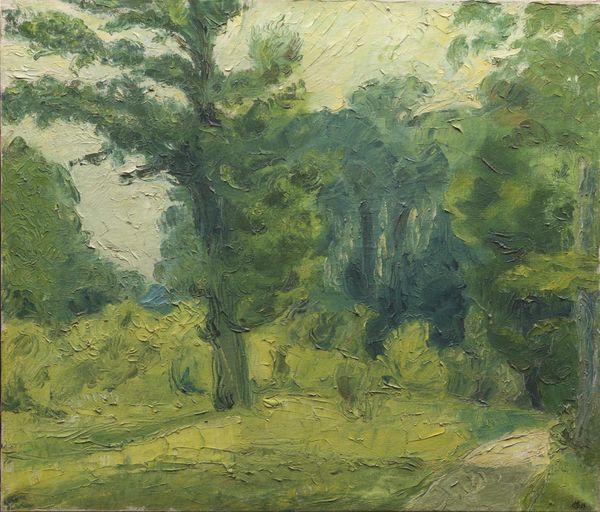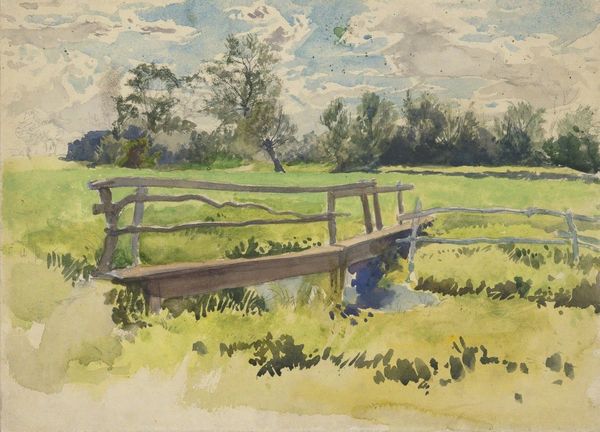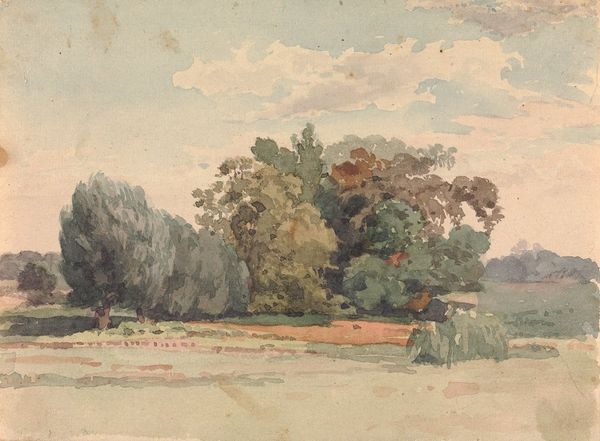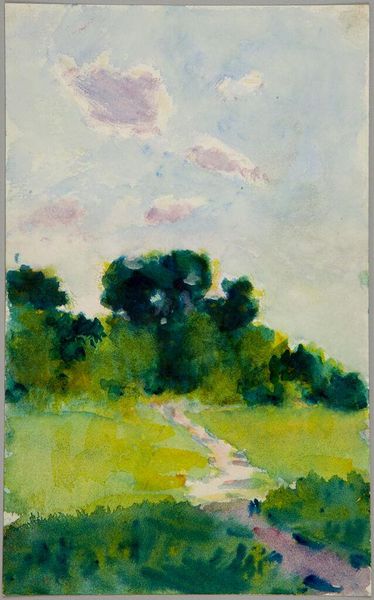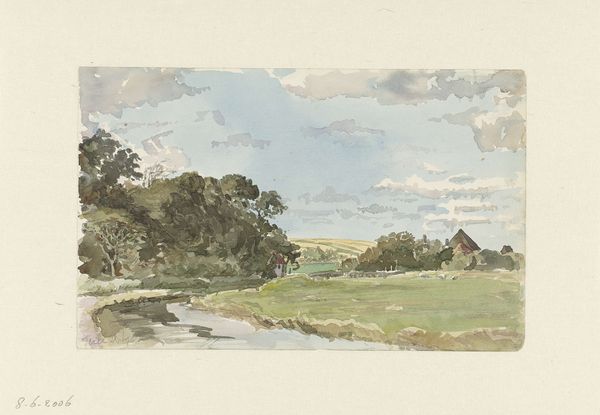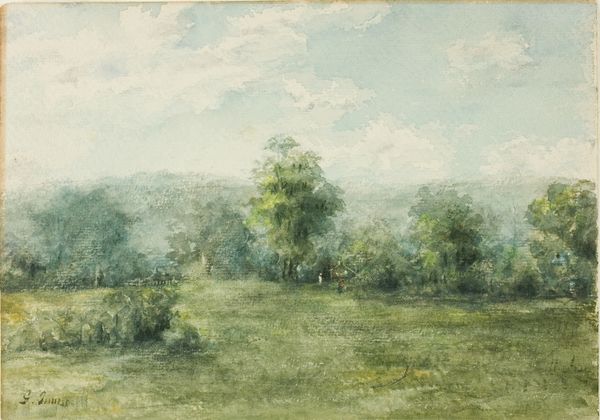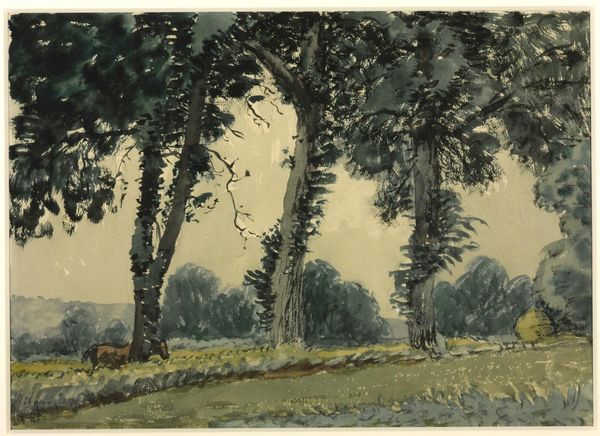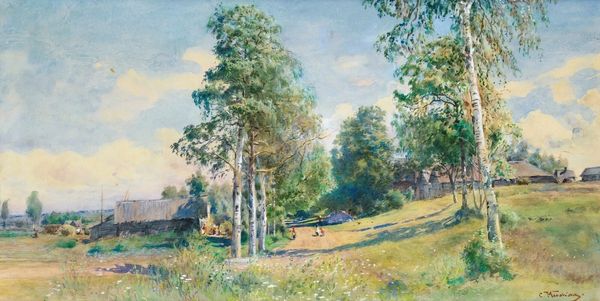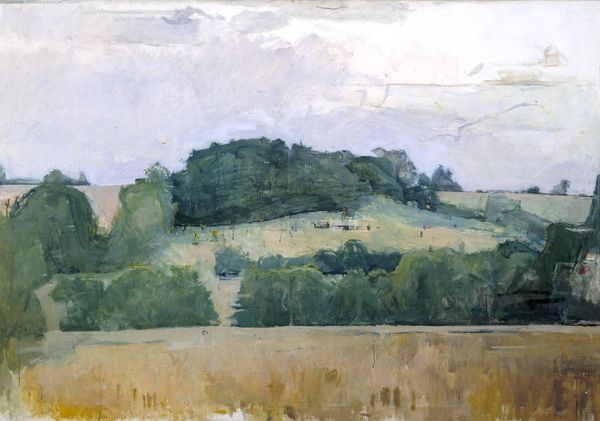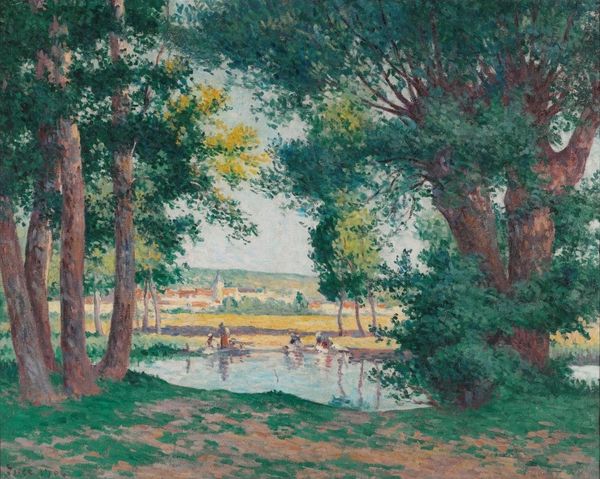
painting, plein-air, watercolor
#
water colours
#
painting
#
impressionism
#
plein-air
#
landscape
#
oil painting
#
watercolor
#
mixed medium
#
watercolor
Copyright: Public Domain: Artvee
Curator: Before us we have “Landscape; Meadow. Church in background”, by Edwin Austin Abbey, rendered with watercolor and mixed medium. Editor: Immediately, there’s a haziness to it, a lightness. The greens and blues are incredibly muted. Curator: Abbey's piece emphasizes open composition and color fields, characteristic of Impressionist plein-air work. Observe the careful interplay of light and shadow which generates depth despite its nearly monochromatic execution. Editor: It seems so simple, but what’s fascinating to me is considering how works like this—presumably crafted outdoors, capturing fleeting moments—challenge our perception of value. Labor is evident, in the transport, the skill… how did societal structures and economies value the time and effort spent making what looks almost effortless here? Curator: A fair question. Abbey employs very rapid brushstrokes which dissolve the forms and focus on the transient effects of light and atmosphere. His engagement with temporality creates an image that speaks to the mutability of nature itself, resisting the stable forms of academic art. Editor: Precisely. We need to remember that painting materials like watercolors weren't always so readily available. The social aspects of gathering materials, mixing pigments, and allocating time for creating art are sometimes overlooked within the immediate appeal of the image. Curator: So, beyond the pure formalism, you consider what’s unrepresented in favor of accessibility and privilege. It prompts us to inquire more thoroughly into artistic practice itself, doesn't it? Editor: Absolutely. When one analyzes its components, the painting's aura almost immediately shifts. It transcends pretty aestheticization of landscape by asking bigger questions regarding materiality, labour, and the circumstances behind creative expression. Curator: Well, seeing it through that prism enriches my understanding of the interplay between visible content and the often-invisible means of its making. Thank you for sharing. Editor: And thank you. Thinking critically about materiality inevitably deepens our collective understanding.
Comments
No comments
Be the first to comment and join the conversation on the ultimate creative platform.

